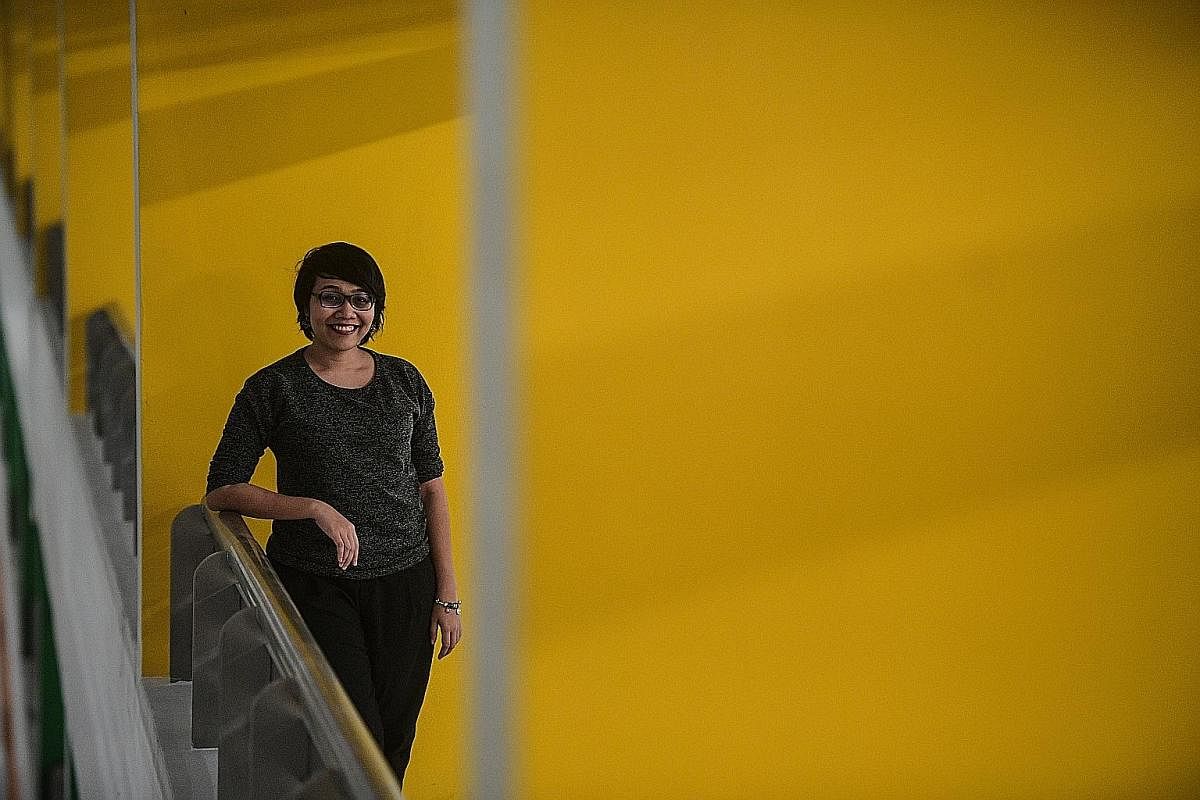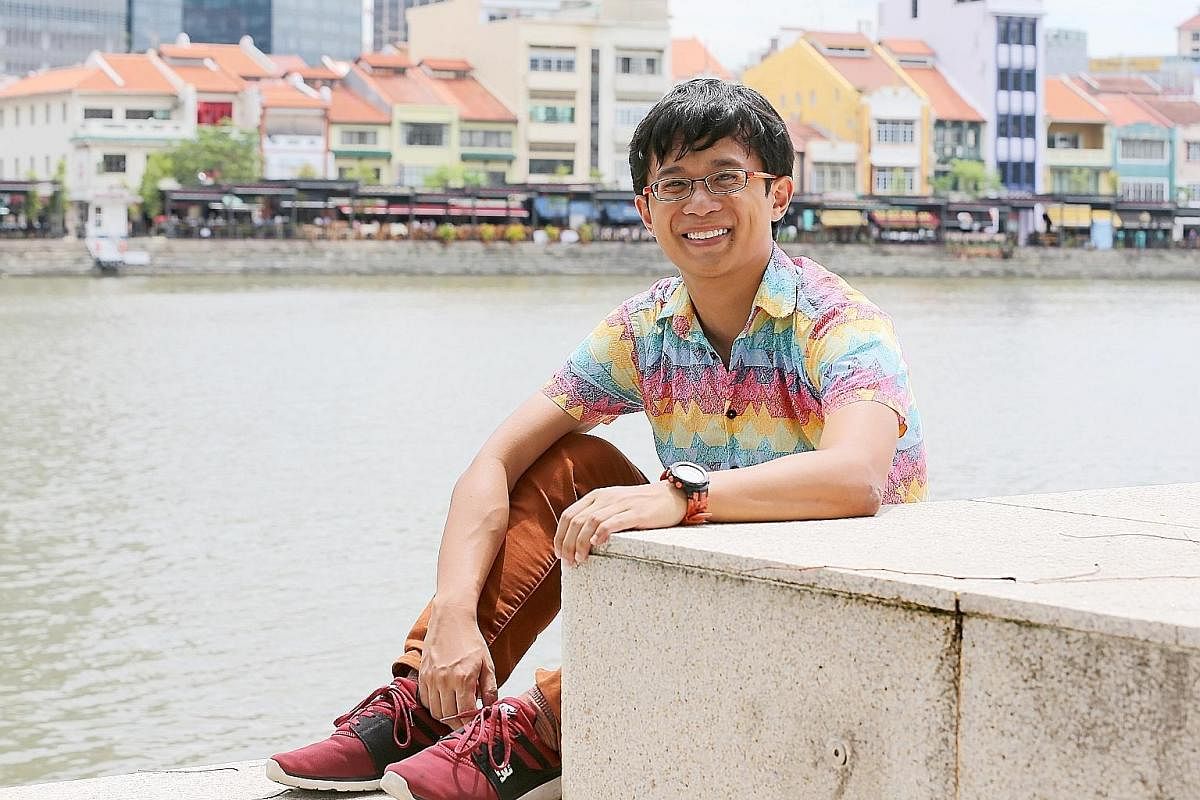Singapore fantasy fiction takes flight
Speculative fiction set in the Republic is gaining traction here, with at least eight home-grown works published in the last six months



Beyond the familiar realities of Housing Board void decks and the Marina Bay skyline, other worlds are mushrooming. Merlions rise from the ruins of a future Singapore to rip war machines apart; clones of founding premier Lee Kuan Yew battle to graduate from a secret academy; MRT trains disappear into tunnels, never to be seen again.
Speculative fiction in Singapore is gaining ground, with at least eight home-grown novels and anthologies in this vein published in the last six months.
Speculative fiction is a blanket term used for literature that asks, "What if?". These weird works span science fiction, fantasy, the supernatural and that which falls into the cracks among these genres.
After decades of being dismissed for not being "literary" enough, compared with the social realism that has long been local fiction's mainstay, it is emerging from the woodwork.
Leading the charge is The Gatekeeper, a novel which plants the figure of Medusa - a snake-haired monstress from Greek mythology who turned those she gazed upon into stone - in a fantasy landscape woven from threads of the Malay Archipelago's history and Malay folklore.
Released last month, it bagged its author Nuraliah Norasid $25,000 in last year's Fiction Prize by local publisher Epigram Books, beating other works that might be considered more traditionally "literary".
Epigram founder Edmund Wee, 64, says: "We don't publish only high fiction. The genre to us is not important. The Gatekeeper was just really well-written."
For her novel, Nuraliah, 30, drew on Singapore's often overlooked pre-colonial history. "I was looking at submerged histories," she says. "These are overshadowed by more mainstream histories - like how, for the longest time, it's been said that before the coming of Sir Stamford Raffles, Singapore was just a fishing village. But it was already a hub in many respects for not just trading, but also religious education."
To this end, she invented the "submerged" tongue of Tuyunri, after studying how fictional languages such as Dothraki from Game Of Thrones were created.
In the book's island world of Manticura, humans co-exist uneasily with other sapient races.
While Nuraliah says she had no explicit intention of making statements about race beyond highlighting the diversity within Singapore and the region, the novel, in its own quiet way, deals with alienation and the condition of living on the margins of society.
Such fiction can be a subversive way of delivering social critique, says writer Jason Erik Lundberg, who in 2012 founded Lontar, the first biannual literary journal to focus on South-east Asian speculative fiction.
"It shows alternate points of view. It explores these big subjects in ways that are accessible," says the 41-year- old, who at first had to "go around begging for stories" for Lontar. The journal is now thriving, with an eighth issue out last month.
According to writer Ng Yi-Sheng, who has done research into the history of genre fiction in Singapore, local speculative fiction has its roots in the little-known 1950s ghost stories penned by the late Minister of Social Affairs Othman Wok, then a journalist for Malay newspaper Utusan Melayu and Malay magazine Mastika, as well as the early uncanny works of Catherine Lim.
The few antecedents for local fantasy novels include Gwee Li Sui's recently reprinted graphic novel Myth Of The Stone (1993).
Singapore Science Fiction, a 1980 anthology drawn from the entries to a short story competition, sparked a local interest in the genre and was followed by landmark works such as Han May's Star Sapphire (1985), in which a young Asian scientist joins the crew of an intergalactic starship in the 23rd century.
Despite this, the genre did not really take root in Singapore. Veteran poet Kirpal Singh, one of the editors of the 1980 anthology, attributes this to the disdain with which it was met by the literary community.
Nevertheless, the Singapore Management University associate professor of English literature believes science fiction should be compulsory teaching in schools.
"Nations with the best science fiction - America, Poland, the Nordic countries - are doing very well today in terms of emotional and ideological adjustments to the new technological era," he says. "Whereas countries such as Singapore tend to be mostly apprehensive and thus afraid of tomorrow."
But in recent years, it appears Singaporean readers are daring to dream a little bigger. "Previously, people dismissed such works as daydreams," says Ng. "Now, people are taking them seriously."
In a mark of the changing times, the Singapore Writers Festival will be making speculative fiction one of its areas of focus for its 20th edition in November.
Festival director Yeow Kai Chai calls speculative fiction "one of the more exciting creative phenomena today, with the line between literary and genre fictions getting blurred".
He is intrigued by the cropping up of local speculative anthologies in recent years, such as last year's This Is How You Walk On The Moon, Eastern Heathens (2013) and The Ayam Curtain (2012).
"That's why this year, we are highlighting speculative fiction and the different ways it compels us to imagine and ask questions about the fate of humanity, the environment and alternate realities."
Twists on the familiar
Speculative fiction has long been considered the province of the West, but local writers are striving to make it their own.
Architect Tham Cheng-E, 37, says: "UFOs and little green men with ray-guns always preferred the larger countries. They loved the United States so much they kept going back."
But if one really wanted to hide a secret, he thought, would not a sleepy fishing village on a tiny island be the best place?
Cue Surrogate Protocol, his historical science-fiction novel released last week, about an ageless amnesiac who has hidden in Singapore for more than a century from the secret agents hunting him for his immortal blood.
Others set out to reclaim well-worn national icons such as the Merlion. Linguistics student Kevin Martens Wong, 24, felt it was "unfairly maligned" as an artificial construct. "I set out to give it a mythology and work it into a setting that made it natural."
In his novel Altered Straits, which came out in February, deadly Merlions are weaponised in the 1940s through forced pair-bonding with child soldiers. Meanwhile, in the future, the dystopian ruin of Singapore is under threat by a hive intelligence and a Singapore Armed Forces officer must go back in time to obtain a Merlion to battle it.
Librarian Zed Yeo last November published young adult novel Half Ghost, about a boy who is part- jiangshi - a Chinese vampire - and who, after stumbling into a hellish dimension of his HDB block, is hunted by a pontianak.
Yeo, 33, wanted to give heartland kids a supernatural story set in the HDB corridors and back alleys they know. "If in stories, you don't see yourself as a hero, you'll believe that you're not a hero. Do we want our kids to be heroes? Of course I do."
For other writers, alternative realities provide a chance to explore socio-political situations without being overt.
Short story collection Track Faults And Other Glitches by journalist Nicholas Yong, 36, satirises in its first story the shuffling bureaucracy of the civil service, as the Ministry of Zombie Advancement is faced with a viral epidemic that turns zombies into humans. It is called - in a nod to civil service lingo - the "Revert Virus". "Why is that?" demands one of the more clueless directors. "Is it spread by e-mail?"
In J.Y. Yang's short story Auspicium Melioris Aevi - its title is taken from the Latin motto of Raffles Institution, which translates it as "Hope Of A Better Age" - a secret academy clones world leaders, who compete fiercely to graduate. One of the clones of the late Mr Lee Kuan Yew begins to question the system and sets out to subvert it.
Since it was published in March in the three-year-old online journal Uncanny Magazine, Yang's story has become the sixth most read original work on the international site.
The 31-year-old believes the qualities of speculative fiction make it easier to transcend cultural boundaries and reach readers elsewhere. "You're talking about alien planets and fantasy worlds. It's an excuse to say it's culturally unrelatable."
Speculative fiction is also a way to cope with changes close to home.
A flurry of upgrading projects in freelance writer Clara Chow's HDB estate "were messing with my memory and sense of belonging in strange ways", she says.
The 39-year-old put together short story collection Dream Storeys based on buildings dreamt up by architects she interviewed - self- destructing malls, print-to-order flats and even the Singapore Flyer as a political prison.
Her buildings need not ripple into reality to effect change, she adds. "It's just enough that they exist on paper as an alternative, a reminder to people that things don't necessarily only have to be one rigid way."
Nuraliah says: "A friend of mine once said the buildings in Singapore look like hibernating robots, ready to roll out the moment the Government pushes a button.
"We must learn to find fantasy in hidden corners. I believe it's there."
Join ST's Telegram channel and get the latest breaking news delivered to you.
A version of this article appeared in the print edition of The Straits Times on May 02, 2017, with the headline Singapore fantasy fiction takes flight. Subscribe

